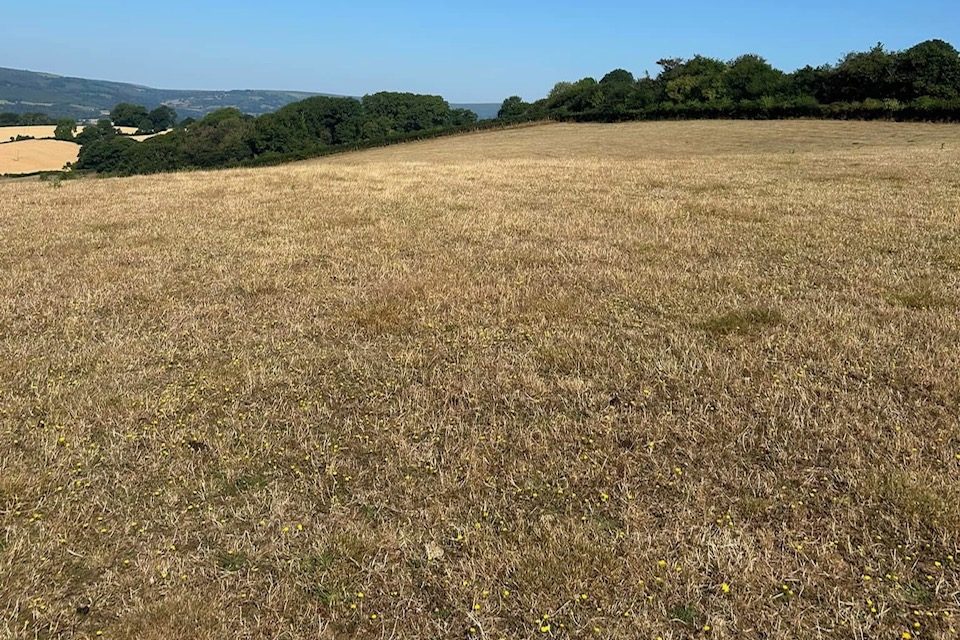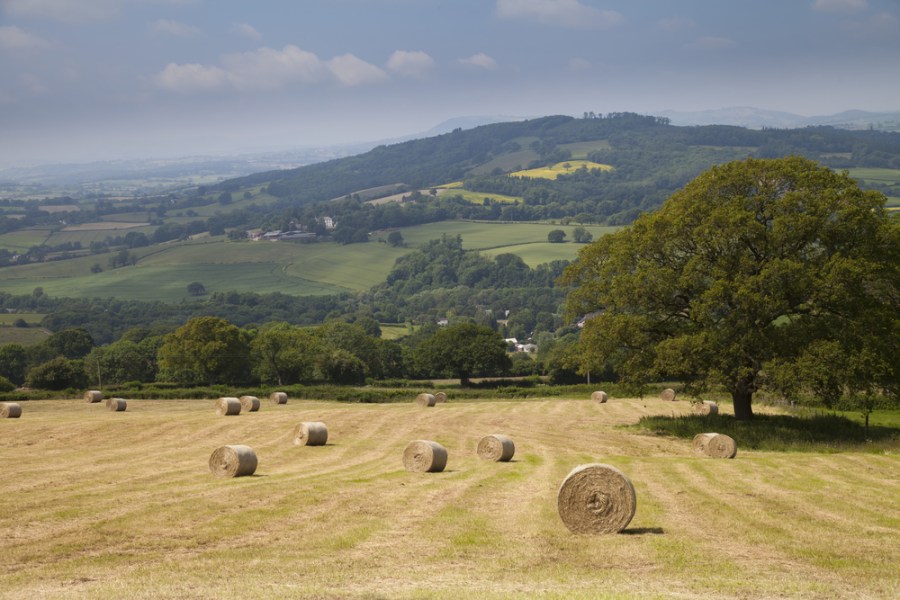Horse owners across the UK are being urged to plan ahead amid growing concerns about a potential hay shortage this winter.
A combination of unseasonably dry weather, late spring growth, and reduced yields has led to tightening supply and rising prices, raising questions around availability — especially in drought-hit regions.
Some parts of the UK, particularly in the south and the east, have seen severe drought conditions, which have severely impacted hay production.
Farmers are reporting significantly smaller first cuts than usual.
Liam Ellis, a hay and straw merchant in Monmouthshire, southeast Wales, said that the ongoing dry weather has significantly affected his business.
“We make approximately 50,000 small bales of hay a year for the equine market. This year our crops are down by 45-50% due to a very late, dry spring.
“We really haven’t had any rain here since March.”
He stressed that the poor yield wasn’t due to a lack of preparation or care.
“Our crops are way down. They’ve have had the normal treatment and fertiliser application; it’s just due to the weather.”
Increased prices
With reduced output and rising costs, Liam said that his business has had no choice but to increase prices and suggested that many people will be looking for other options.
“We’ve had to increase our prices to pay for machinery and make sure we earn enough.
“I think people will have to find alternatives [to hay]. There is plenty of bagged products on the market, but they are more expensive.
“Last year our small bale hay was £5 per bale, this year it will be £7.”
Recent rainfall in some areas has brought cautious optimism.
“We have just had rain, and we are hopeful now for a second cut this week, whereas 10 days ago we weren’t,” Liam noted.

A contrast in conditions
Phil Latham, who owns Kelsall Equestrian Centre in Cheshire, has observed a marked contrast in weather patterns across the country this year.
“Geographically, there’s quite a spread in conditions,” he explained.
“We’re still quite green here, and I think we’re lucky in that sense. The east coast and the south, however, have experienced some of the driest conditions in 200 years.”
This weather shift has had a direct impact on forage availability, with suppliers struggling to meet demand.
Phil recently received an unexpected enquiry that highlights the growing shortage.
“For the first time in a long while, we had a serious enquiry from a firm in Dubai,” he said.
“They’ve been unable to source enough hay from their usual suppliers, and they’re looking to see what’s available.”
While the situation presents a potential opportunity for his business, Phil is still weighing his options.
“I’ll have to decide whether we’re going to pursue this or not,” he added.
Phil also mentioned the rising prices in the market, with some reports suggesting a jump to £200 per tonne for hay.
This is a 100% increase on last year’s prices in some cases.
‘Get it while you can’
For horse owners concerned about their forage supplies for the winter, Phil offered a simple piece of advice.
“The sentiment should be: if you’re worried about your forage stocks for the winter, get it now and secure it while you can.”
For Phil’s own business at Kelsall, it’s about balancing immediate needs with future planning.
He plans to stocktake and ensure that the necessary supplies are available for the livery yards based there.
Phil was also quick to point out that, despite the dry conditions earlier in the year, his crops have been lucky in terms of rainfall.
“We’ve been fortunate to get the right amount of moisture at the right time,” said Phil.
“We were drier in April, but if you look at the rainfall maps, you’ll see that much of the east and south of the country has been severely compromised.”
Hay supply ‘in jeopardy’
Lauren Johnson runs Graveney Equine, a track system livery yard based in Faversham, Kent, and has been hit with the reality of a forage shortage firsthand.
“If you’ve been trying to source hay lately, you’ll know it’s becoming increasingly difficult, and expensive, across the UK.
“My own hay supply was in jeopardy this year,” Lauren stated.
She added that her regular supplier struggled to fulfil her usual order after losing a proportion of it to fire when the weather was extremely hot.
Lauren was fortunate to find a solution, but not without added cost and stress.
“This hay shortage is frustrating and stressful, especially when you’re just doing your best to keep animals healthy and well-fed,” she said.
“I was very lucky to have an alternative supplier who was able to bring me two loads of hay from two alternate locations — but it will come at a cost.
“We’ve gone from paying around £150 per tonne with quotes up to £200 per tonne.
“Small bales will be closer to the £350 per tonne mark, as the price per tonne will increase the smaller your bale size.”
Livery owners ‘over a barrel’
Lauren encourages early planning to ease the burden later in the year.
“With some forward planning, a bit of creativity, and a focus on reducing waste, it is possible to get through the season without compromising welfare.
“But please don’t leave it until you desperately need it. At that point you could be in for some stress,” she added.
Lauren also urged livery clients to show understanding during tough financial decisions.
“Please be kind to your yard owners when the discussion of hay price increases and the inevitable livery price increases come with it.
“We hate times like this, when we are over a barrel and have to raise costs on an already expensive pastime.”








